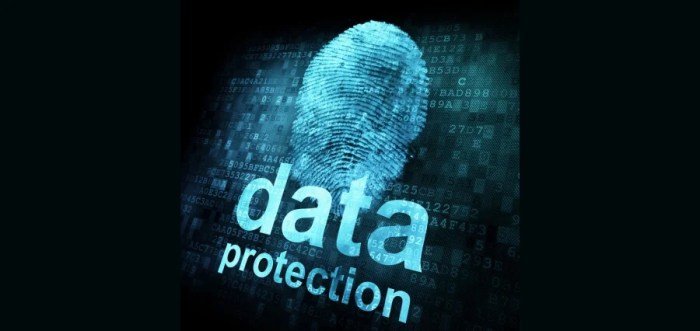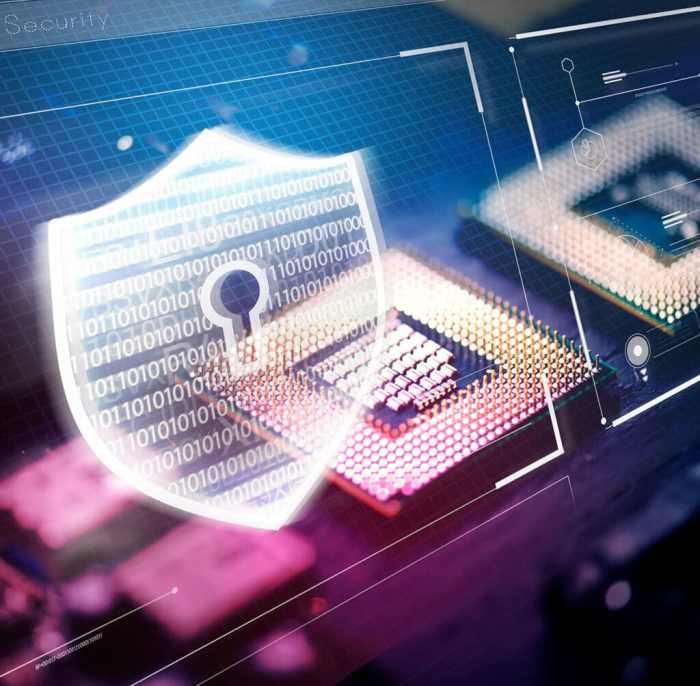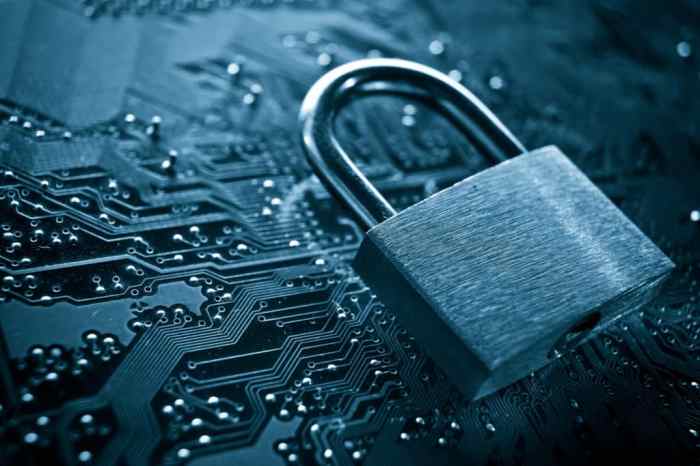Software to protect data – In today’s digital landscape, data security is paramount. Businesses and individuals alike face a constant barrage of cyber threats, ranging from simple phishing scams to sophisticated ransomware attacks. Protecting your valuable data requires a multi-layered approach, and robust data protection software plays a crucial role in this strategy. This comprehensive guide will delve into the various types of software available, their functionalities, and how to choose the right solution for your specific needs.
We’ll also explore key considerations like data loss prevention (DLP), encryption, and backup and recovery solutions.
Understanding the Need for Data Protection Software
The consequences of a data breach can be devastating. Financial losses, reputational damage, legal repercussions, and the erosion of customer trust are just some of the potential outcomes. Data protection software acts as a shield, mitigating these risks by implementing various security measures to safeguard your sensitive information. This includes personal data, financial records, intellectual property, and other critical assets.
Types of Data Breaches and Their Impact
- Phishing Attacks: These involve deceptive emails or messages designed to trick individuals into revealing sensitive information such as passwords or credit card details.
- Malware Infections: Malicious software like viruses, ransomware, and spyware can compromise systems, steal data, and disrupt operations.
- Insider Threats: Malicious or negligent employees can pose a significant risk, potentially leading to data leakage or sabotage.
- SQL Injection Attacks: Exploiting vulnerabilities in database applications to gain unauthorized access to sensitive data.
- Denial-of-Service (DoS) Attacks: Overwhelming a system with traffic, rendering it inaccessible to legitimate users.
The impact of these breaches can extend far beyond immediate financial losses. Regulatory fines (like GDPR and CCPA violations), loss of customer trust, and damage to brand reputation can have long-term consequences.

Source: insightssuccess.com
Types of Data Protection Software
The market offers a wide array of data protection software solutions, each catering to specific needs and security requirements. Here are some key categories:
1. Antivirus and Antimalware Software
This is the foundational layer of data protection. Antivirus software detects and removes malicious software, preventing infections that can lead to data theft or system compromise. Examples include Norton, McAfee, Bitdefender, and Kaspersky. These solutions often incorporate real-time protection, scheduled scans, and firewall capabilities.

Source: dataprise.com
2. Data Loss Prevention (DLP) Software
DLP software focuses on preventing sensitive data from leaving the organization’s control. It monitors data movement, identifies sensitive information, and blocks unauthorized attempts to transfer it outside the network. Features include data encryption, access control, and monitoring of various communication channels (email, cloud storage, etc.).
3. Encryption Software
Encryption converts data into an unreadable format, protecting it from unauthorized access even if it’s stolen. Encryption software can be used to protect individual files, entire hard drives, or network communications. Common encryption algorithms include AES and RSA. Full-disk encryption (FDE) is a particularly effective method for protecting data on laptops and other portable devices.
4. Backup and Recovery Software
Regular backups are crucial for data recovery in case of hardware failure, accidental deletion, or cyberattacks. Backup software automates the process of creating copies of data and storing them securely, either locally or in the cloud. Recovery software allows for the restoration of data from these backups.
5. Intrusion Detection and Prevention Systems (IDPS)
IDPS monitors network traffic for suspicious activity, identifying potential intrusions and preventing attacks before they can cause damage. These systems utilize various techniques, including signature-based detection and anomaly detection, to identify threats.
6. Endpoint Detection and Response (EDR) Software, Software to protect data
EDR solutions provide advanced threat detection and response capabilities at the endpoint level (computers, laptops, mobile devices). They monitor system activity, detect malicious behavior, and enable incident response actions to contain and remediate threats.
Choosing the Right Data Protection Software
Selecting the appropriate software depends on several factors:
- Budget: Software solutions range in price from free antivirus programs to enterprise-level security suites.
- Data Sensitivity: The level of protection required depends on the sensitivity of the data being protected.
- System Compatibility: Ensure the software is compatible with your operating systems and hardware.
- Scalability: Choose a solution that can scale to meet your future needs.
- Ease of Use: The software should be user-friendly and easy to manage.
- Technical Support: Reliable technical support is essential in case of problems or questions.
Data Security Best Practices Beyond Software
While software plays a critical role, comprehensive data protection requires a holistic approach. Here are some best practices:
- Strong Passwords: Use unique, complex passwords for all accounts.
- Multi-Factor Authentication (MFA): Enable MFA wherever possible to add an extra layer of security.
- Regular Software Updates: Keep your operating systems, applications, and antivirus software up-to-date with the latest security patches.
- Employee Training: Educate employees about phishing scams, malware, and other security threats.
- Data Encryption: Encrypt sensitive data both in transit and at rest.
- Access Control: Implement strict access control measures to limit who can access sensitive data.
- Regular Security Audits: Conduct regular security audits to identify vulnerabilities and weaknesses.
Frequently Asked Questions (FAQ)
- Q: What is the best antivirus software? A: There is no single “best” antivirus software, as the ideal choice depends on individual needs and preferences. Popular options include Norton, McAfee, Bitdefender, and Kaspersky. Consider factors like price, features, and system compatibility.
- Q: How much does data protection software cost? A: The cost varies significantly depending on the type of software, features, and the number of users or devices covered. Free options are available, but enterprise-level solutions can be quite expensive.
- Q: Is cloud-based backup safe? A: Cloud-based backups offer significant advantages, including redundancy and accessibility. However, it’s crucial to choose a reputable provider with robust security measures in place.
- Q: How often should I back up my data? A: The frequency of backups depends on the criticality of the data. For critical data, daily or even more frequent backups are recommended. For less critical data, weekly or monthly backups may suffice.
- Q: What is ransomware and how can I protect myself? A: Ransomware is malicious software that encrypts your data and demands a ransom for its release. Protecting yourself involves using antivirus software, regularly backing up your data, and being cautious about opening suspicious emails or attachments.
References
- National Institute of Standards and Technology (NIST)
- Cybersecurity and Infrastructure Security Agency (CISA)
- National Cyber Security Centre (NCSC)
Call to Action
Protecting your valuable data is a critical investment. Don’t wait for a data breach to happen. Start exploring data protection software options today and implement robust security measures to safeguard your information. Contact us to discuss your specific needs and find the right solution for your organization.
FAQ Section: Software To Protect Data
What types of data are most vulnerable to attacks?
Personally identifiable information (PII), financial data, intellectual property, and health records are among the most sought-after and vulnerable data types.
How often should data protection software be updated?
Software updates should be installed as soon as they are released to patch security vulnerabilities and enhance performance. Regular updates are crucial for maintaining optimal protection.

Source: cybeready.com
What is the difference between data encryption and data backup?
Encryption scrambles data to make it unreadable without the decryption key, while backup creates copies of data for recovery in case of loss or damage. Both are important aspects of a comprehensive data protection strategy.
Is cloud-based data protection software secure?
Reputable cloud providers employ robust security measures, but the security of cloud-based software depends heavily on the provider’s practices and the user’s configuration. Thorough due diligence is crucial.
What is the role of user education in data protection?
User education plays a critical role. Educating users about phishing scams, strong passwords, and safe online practices is crucial to minimizing human error, a significant vulnerability in any data protection system.
